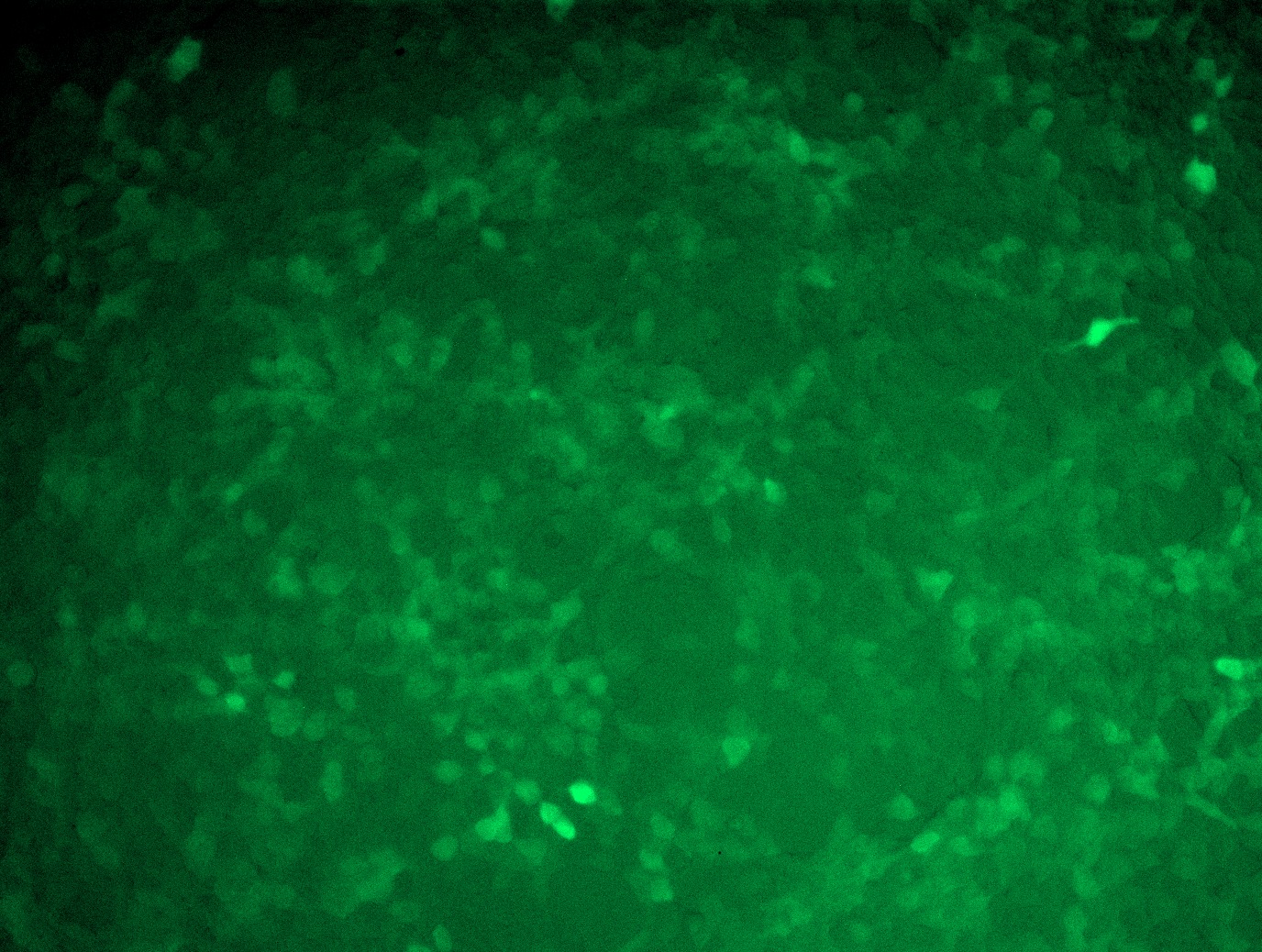Sumo 1 (SUMO1) (NM_003352) Human Tagged ORF Clone Lentiviral Particle
CAT#: RC200633L4V
- LentiORF®
-

Lenti ORF particles, SUMO1 (mGFP-tagged) - Human SMT3 suppressor of mif two 3 homolog 1 (S. cerevisiae) (SUMO1), transcript variant 1, 200ul, >10^7 TU/mL
Lentiviral Particles: DDK DDK w/ Puro mGFP
AAV Particle: DDK
Buy this product and get 50% off on the Lenti RapidTiter kit. Use Code: Rapid50
USD 365.00
Specifications
| Product Data | |
| Type | Human Tagged ORF Clone Lentiviral Particle |
| Tag | mGFP |
| Symbol | SUMO1 |
| Synonyms | DAP1; GMP1; OFC10; PIC1; SENP2; SMT3; SMT3C; SMT3H3; UBL1 |
| Mammalian Cell Selection | Puromycin |
| Vector | pLenti-C-mGFP-P2A-Puro |
| ACCN | NM_003352 |
| ORF Size | 303 bp |
| Sequence Data |
The ORF insert of this clone is exactly the same as(RC200633).
|
| OTI Disclaimer | The molecular sequence of this clone aligns with the gene accession number as a point of reference only. However, individual transcript sequences of the same gene can differ through naturally occurring variations (e.g. polymorphisms), each with its own valid existence. This clone is substantially in agreement with the reference, but a complete review of all prevailing variants is recommended prior to use. More info |
| OTI Annotation | This clone was engineered to express the complete ORF with an expression tag. Expression varies depending on the nature of the gene. |
| Reference Data | |
| RefSeq | NM_003352.4 |
| RefSeq Size | 1527 bp |
| RefSeq ORF | 306 bp |
| Locus ID | 7341 |
| UniProt ID | P63165 |
| Cytogenetics | 2q33.1 |
| Domains | UBQ |
| Protein Families | Druggable Genome, Stem cell - Pluripotency, Transcription Factors |
| MW | 11.6 kDa |
| Gene Summary | This gene encodes a protein that is a member of the SUMO (small ubiquitin-like modifier) protein family. It functions in a manner similar to ubiquitin in that it is bound to target proteins as part of a post-translational modification system. However, unlike ubiquitin which targets proteins for degradation, this protein is involved in a variety of cellular processes, such as nuclear transport, transcriptional regulation, apoptosis, and protein stability. It is not active until the last four amino acids of the carboxy-terminus have been cleaved off. Several pseudogenes have been reported for this gene. Alternate transcriptional splice variants encoding different isoforms have been characterized. [provided by RefSeq, Jul 2008] |
Documents
| Product Manuals |
| FAQs |
| SDS |
Resources
{0} Product Review(s)
Be the first one to submit a review






























































































































































































































































 Germany
Germany
 Japan
Japan
 United Kingdom
United Kingdom
 China
China

